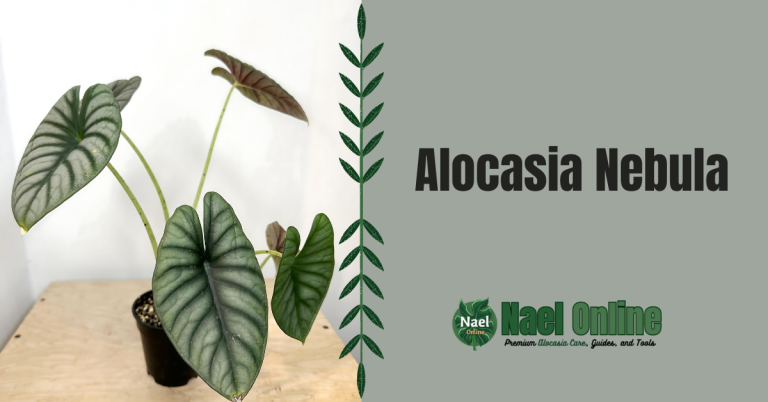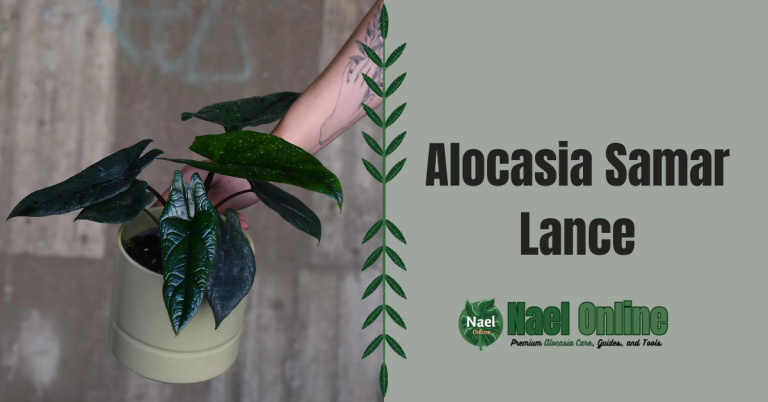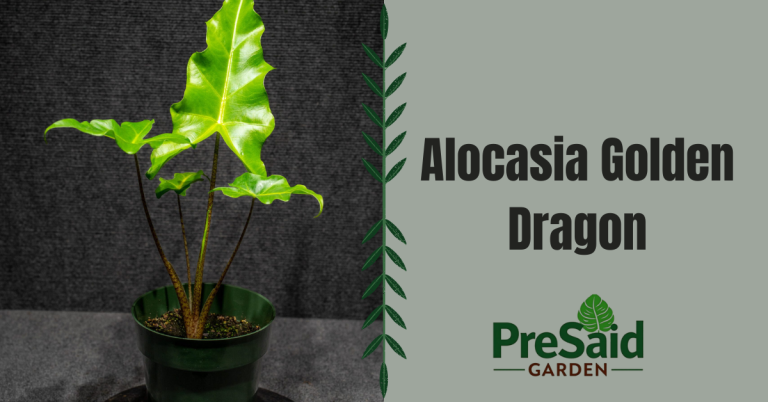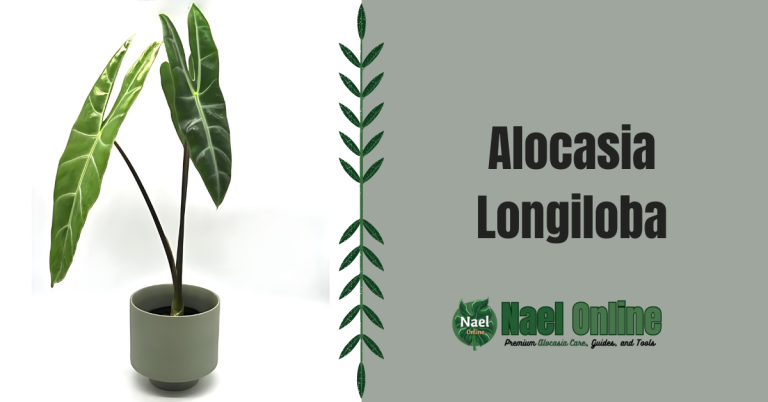Alocasia Elephant Ear Plants: Care, Growing Tips & Benefits

Hey there, plant lovers! Lucas William here from Lexivo Garden. For the past decade, I’ve been nurturing various Alocasia species right here in Oregon, and let me tell you, it’s been quite the ride. Today, I’m excited to share my firsthand experience with the stunning Alocasia elephant ear plant. If you’re looking to add a touch of tropical drama to your home, you’re in for a treat!
Before we dive in, remember that caring for these beauties requires some specific tools. Check out our shop at Lexivo Garden for all your Alocasia care essentials!
What Are Alocasia Elephant Ear Plants?
Alocasia elephant ear plants are showstoppers, plain and simple. With their massive, heart-shaped leaves, they bring a slice of the tropics right into your living room. These plants aren’t just big; they’re bold, beautiful, and bursting with personality.
Plant Care at a Glance
Here’s a quick rundown of what your Alocasia elephant ear needs:
| Care Aspect | Requirement |
|---|---|
| Light | Bright, indirect light |
| Water | Keep soil moist, not soggy |
| Temperature | 60-85°F (15-29°C) |
| Humidity | High (60-80%) |
| Soil | Well-draining, rich potting mix |
| Fertilizer | Monthly during growing season |
The Backstory: Origin, Family, and History
Alocasia elephant ear plants hail from the warm, humid regions of Southeast Asia. They’re part of the Araceae family, which includes other popular houseplants like pothos and peace lilies. In their natural habitat, these plants thrive in the dappled sunlight of tropical forests.
What’s in a Name?
- Common Name: Elephant Ear Plant (for obvious reasons!)
- Scientific Name: Alocasia (various species)
- Family Name: Araceae
Why You Need an Alocasia Elephant Ear in Your Life
- Natural Air Purifiers: These plants are champs at cleaning indoor air.
- Instant Tropical Vibes: No need for a plane ticket; just add an Alocasia!
- Conversation Starters: Trust me, everyone will ask about your elephant ear plant.
The Alocasia Elephant Ear Look Book
Size Matters
These aren’t your average houseplants. Depending on the species, Alocasia elephant ears can grow anywhere from 2 to 15 feet tall! In my experience, the most common indoor varieties usually top out around 3-6 feet.
Those Famous Leaves
The stars of the show are undoubtedly the leaves. They’re huge, often spanning 2-3 feet in length. The texture is smooth and waxy, perfect for reflecting light and giving your space a lush, jungle-like feel.
Color Me Impressed
While most Alocasia elephant ears sport various shades of green, some varieties add a pop of color:
- Deep purple undersides
- Silvery veins
- Variegated patterns
Caring for Your Alocasia Elephant Ear: The Nitty-Gritty

Alright, let’s roll up our sleeves and get into the details of Alocasia care.
Light: Bright but Not Harsh
In my Oregon home, I’ve found that Alocasias thrive in bright, indirect light. A few feet away from a north or east-facing window is perfect. Too much direct sun, and you’ll end up with crispy leaves – trust me, I learned that the hard way!
Water: The Goldilocks Zone
Alocasia elephant ears like their soil moist but not waterlogged. I water mine when the top inch of soil feels dry. In summer, that might mean watering twice a week, while in winter, once every 10 days is usually enough.
Humidity: Crank It Up
These plants love humidity. I aim for 60-80% humidity around my Alocasias. A humidifier works wonders, or you can create a pebble tray with water. Misting helps, but it’s not a long-term solution.
Soil: Well-Draining is Key
I use a mix of:
- 2 parts quality potting soil
- 1 part perlite
- 1 part orchid bark
This combo provides the perfect balance of moisture retention and drainage.
Fertilizer: Feed Your Beast
During the growing season (spring and summer), I feed my Alocasias monthly with a balanced, water-soluble fertilizer. Come fall and winter, I cut back to once every two months.
Propagation: Spread the Love
Ready to make more Alocasias? Here’s how I do it:
- Wait for your plant to produce offsets (baby plants) at the base.
- Gently separate these offsets, ensuring each has some roots.
- Pot them up in small containers with the same soil mix as the parent plant.
- Keep them warm and humid, and watch them grow!
Pruning: Less is More
Alocasia elephant ears don’t need much pruning. I only remove leaves when they’re yellowing or damaged. Use clean, sharp pruning shears (like the ones we offer in our shop!) to make clean cuts close to the base of the stem.
Repotting: Give Them Room to Grow
I repot my Alocasias every 1-2 years, or when I see roots peeking out of the drainage holes. Spring is the best time for this. Choose a pot that’s 1-2 inches larger in diameter, and use fresh potting mix.
Watch Out: Toxicity and Pests
Toxicity
Alocasia elephant ears are toxic if ingested, so keep them away from curious pets and kids.
Common Pests and Diseases
In my years of growing Alocasias, I’ve battled:
- Spider mites
- Mealybugs
- Root rot (from overwatering)
Regular inspections and proper care are your best defense. If you spot any issues, isolate the plant and treat it promptly.
Alocasia Elephant Ear: How Does It Stack Up?
Compared to other tropical plants, Alocasias are:
- More dramatic than a Monstera
- Easier to care for than a Fiddle Leaf Fig
- More humid-loving than a Pothos
Ready to Start Your Alocasia Journey?
If you’re itching to add an Alocasia elephant ear to your collection, you’re in luck! These plants are becoming more widely available. Prices can range from $20 for a small plant to $100+ for a mature specimen, depending on the variety and size.
Check out local nurseries or reputable online retailers. And don’t forget to swing by our shop at Lexivo Garden for all the care essentials you’ll need!
FAQs: Your Burning Alocasia Questions Answered
Q: How often should I water my Alocasia elephant ear?
A: It depends on your home’s conditions, but generally, water when the top inch of soil feels dry. This could be once or twice a week in summer, less in winter.
Q: Can Alocasia elephant ears grow outdoors?
A: Yes, in USDA zones 8b-11. They make great summer patio plants in cooler areas but must be brought indoors before frost.
Q: Why are my Alocasia’s leaves turning yellow?
A: This could be due to overwatering, underwatering, or low light. Check the soil moisture and adjust your care routine accordingly.
Q: Do Alocasia elephant ears go dormant?
A: Yes, they can enter a dormant phase in winter. Reduce watering and hold off on fertilizing during this time.
Q: How big do Alocasia elephant ears get indoors?
A: Most indoor varieties reach 3-6 feet tall, but some can grow larger with optimal conditions.
And there you have it, folks – everything I’ve learned about growing Alocasia elephant ears over the past decade. Remember, every plant is unique, so don’t be afraid to experiment and find what works best in your space. If you need any supplies to get started or up your Alocasia game, hop over to our Lexivo Garden shop. Happy growing!






